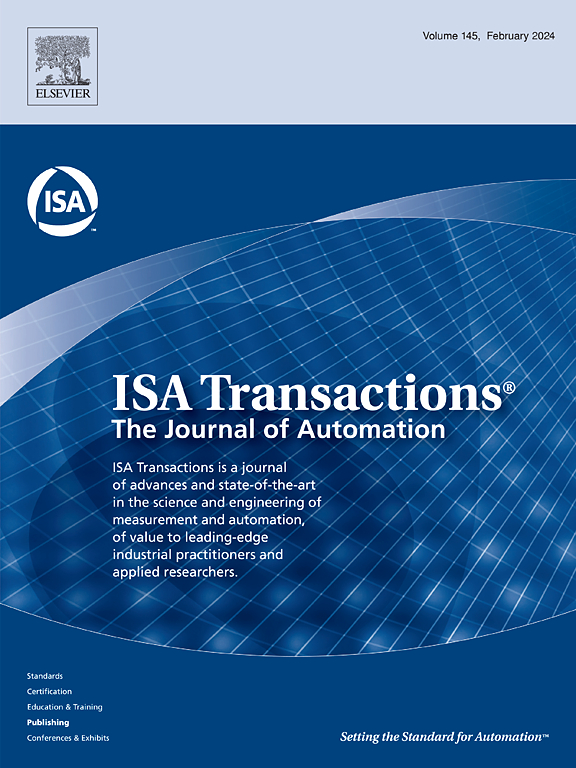竞争-合作神经网络的二部同步及其截断采样数据控制应用。
IF 6.3
2区 计算机科学
Q1 AUTOMATION & CONTROL SYSTEMS
引用次数: 0
摘要
提出了一种基于截断采样数据控制的竞争-合作神经网络中降低耦合强度、实现二部同步的方案。在这种方法中,截断的采样数据控制意味着只使用部分采样信息,其余的被丢弃。在此基础上,本文提出了最大数据截断率的概念,定量表征了带宽的节省。设计了一种与竞争-合作交互相关联的固定截断采样数据控制器,并利用坐标变换技术构造了一个可处理的误差系统。然后,根据控制方案和网络结构的特点,设计了双区间相关Lyapunov函数,以降低耦合强度;将李雅普诺夫理论与不等式技术相结合,给出了保证竞争-合作神经网络二部同步的两个充分准则。基于这些准则,开发了两种算法,分别确定最小允许耦合强度和最大允许数据截断率。讨论了对以前的Lyapunov函数的两个改进:降低允许的耦合强度和增加允许的数据截断率。最后,通过应用和数值算例验证了所提控制方案的优越性和有效性。本文章由计算机程序翻译,如有差异,请以英文原文为准。
Bipartite synchronization of competition–cooperation neural networks and its application via truncated sampled-data control
This paper proposes a scheme to reduce coupling strength and achieve bipartite synchronization in competition–cooperation neural networks based on truncated sampled-data control. In this approach, the truncated sampled-data control means that only partial sampling information is used and the rest are discarded. Based on this, this paper proposes the concept of maximum data truncation rate, which quantitatively characterizes the bandwidth savings. A pinning truncated sampled-data controller associated with competition–cooperation interactions is designed, and a tractable error system is constructed using coordinate transformation techniques. Then, aiming at reducing coupling strength, a dual-interval-dependent Lyapunov function is designed according to the characteristics of the control scheme and the network structure. Combining Lyapunov theory with inequality techniques, two sufficient criteria are developed to ensure the bipartite synchronization of competition–cooperation neural networks. Based on these criteria, two algorithms are developed to determine the minimum allowable coupling strength and the maximum allowable data truncation rate, respectively. Two improvements over the previous Lyapunov functions are discussed: reducing the allowable coupling strength and increasing the allowable data truncation rate. Finally, the advantages and effectiveness of the proposed control scheme are demonstrated by an application and numerical examples.
求助全文
通过发布文献求助,成功后即可免费获取论文全文。
去求助
来源期刊

ISA transactions
工程技术-工程:综合
CiteScore
11.70
自引率
12.30%
发文量
824
审稿时长
4.4 months
期刊介绍:
ISA Transactions serves as a platform for showcasing advancements in measurement and automation, catering to both industrial practitioners and applied researchers. It covers a wide array of topics within measurement, including sensors, signal processing, data analysis, and fault detection, supported by techniques such as artificial intelligence and communication systems. Automation topics encompass control strategies, modelling, system reliability, and maintenance, alongside optimization and human-machine interaction. The journal targets research and development professionals in control systems, process instrumentation, and automation from academia and industry.
 求助内容:
求助内容: 应助结果提醒方式:
应助结果提醒方式:


